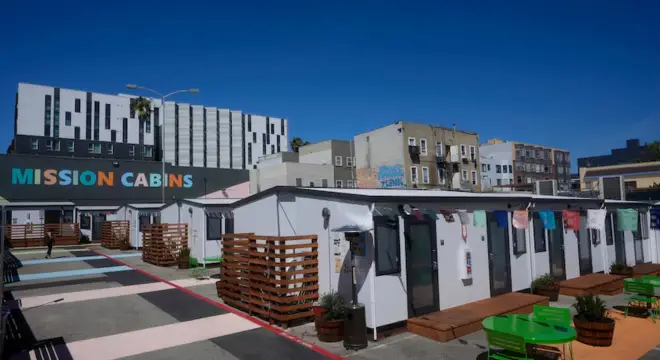Why SoMa and Tenderloin Residents Are Finally Saying “Enough is Enough”
Why are so few neighborhoods in San Francisco shouldering the brunt of the city’s homeless crisis? Is it right to make SoMa and the Tenderloin the designated areas for shelters and services? Why not share the burden across districts? And most importantly – will a more equitable system even work?
Many residents and business owners in SoMa and the Tenderloin are frustrated and have had enough of the status quo. The city is now planning to propose home lease or homeless shelter services evenly across every district in San Francisco instead of a select few.
Let’s examine what this means for San Francisco and why it may change everything.
Section 1: Why SoMa & Tenderloin Residents Said “Enough is Enough”
The areas of SoMa and the Tenderloin have been the hub of services for unhoused individuals in the city of San Francisco for years. Shelters, drug recovery centers, food distribution sites— all are located primarily within these two neighborhoods. While there may have been good intentions, the reality of everyday life for the residents and business owners has changed dramatically.
Residents are saying — their communities are not just overwhelmed by unhoused individuals, but with everything that comes with it. Open drug use, rising crime, unsafe sidewalks, increasing frustration, and difficulty in living. One resident stated “I feel like I’m living in a containment zone, and no one wants to fix it.“
Business owners share the same sentiment: “Stop treating our neighborhood like the city’s dumping ground.” Many owners say they’ve lost customers, experienced regular vandalism, and had to place additional security just to operate.
There you have it: the residents of SoMa and Tenderloin are not against helping — the expectation is that help will be shared equitably across the city.
Section 2: What the New City Plan Actually Proposes
The city’s new plan is simple but bold: instead of concentrating homeless shelters and support services in just a few areas, San Francisco wants to spread them more evenly across all districts.
The idea is to make homelessness a shared responsibility, not just something SoMa and the Tenderloin have to manage alone. Under this plan, every neighborhood would contribute in some way — whether through shelter space, outreach programs, or transitional housing.
City officials say this is a major step toward a long-term solution. By balancing the burden, they believe services will be more effective, communities less overwhelmed, and the entire city better equipped to tackle homelessness together.
It’s not just about fairness — it’s about finally making real progress.
Section 3: Reactions from Across the City
In SoMa and the Tenderloin, the overall response has been mostly positive. After years of doing the lion’s share of the city’s homeless services, many residents and business owners finally feel like they are being heard. For them, the plan signals hope — hope for cleaner streets, easier access to services, safer neighborhoods, and a more balanced future.
But in other neighborhoods, the reaction has not been the same.
In wealthier neighborhoods, the response has been mixed. Many residents support the idea, in theory, but are hesitant to see the plan implemented in their own backyard. Concerns about property values, safety, and character of the community have begun to creep in — the classic case of the “Not In My Backyard” (NIMBY) trope.
Meanwhile, city politicians and community organizations are weighing in. Some leaders are calling it failure to pay attention to the homeless crisis for too long, while others are evaluating ways to include more community input before moving forward.
It’s obvious this plan is ruffling emotions on both sides — and the real challenge will be how the city weighs support, resistance, and results.
Section 4: Challenges the City May Face
While the city’s plan sounds fair on paper, turning it into reality won’t be easy.
One of the biggest hurdles is community resistance — especially in neighborhoods that haven’t dealt with these issues before. The classic “Not In My Backyard” (NIMBY) attitude is already showing up, with some residents pushing back against the idea of shelters or services being built near their homes, schools, or parks.
Then there are the practical challenges. Expanding services across all districts means dealing with budget constraints, finding suitable locations, hiring more staff, and coordinating between departments. It’s a massive logistical effort that requires time, money, and careful planning.
And perhaps the toughest task of all? Building trust. For this plan to work, every neighborhood needs to believe that they’re not being singled out or ignored. Transparent communication, community meetings, and honest dialogue will be key in making residents feel like they’re part of the solution — not just being handed a problem.

Section 5: What’s Next?
So what happens now?
City leaders have not released a detailed timeline yet, but some early planning has already begun. In the months ahead, local agencies will begin identifying possible sites to add some service component in every district, designing the service models, and finding ways to distribute resources equitably.
One of the main concerns will be accountability — how do we know this is working? It has been stated that the city will measure progress by use of data, community feedback, and public updates; allowing city leaders to understand while sometimes moving in different directions, who is making progress and who is not, at the same time.
Another major aspect of community involvement is engaging residents. We’ll be inviting non-profits and residents to public meetings, forums, and workshops, allowing them to ask questions, speak up about their concerns, and aid in helping the city determine how the various services will be embedded into their unique neighborhoods. The goal is to ensure that they are equal partners, not merely observers.
Moving forward will not be easy, but if done correctly, this could lead to a more equitable and unified response to the shared crises we all face in San Francisco.
Conclusion
San Francisco’s new plan is bold but warranted, and is a giant step forward to find a resolution to the city’s homelessness crisis. By allocating shelters and services more evenly across all districts in the city, the city is finally taking a methodical long-overdue route to a challenging endeavor. If neighborhoods work cooperatively, the city can make advances in this matter and truly confront the crisis.
The next step has to be from each resident, business, and politician to be engaged with this plan and make it a reality – after all, homelessness is a shared issue, and we need to all confront it together.


